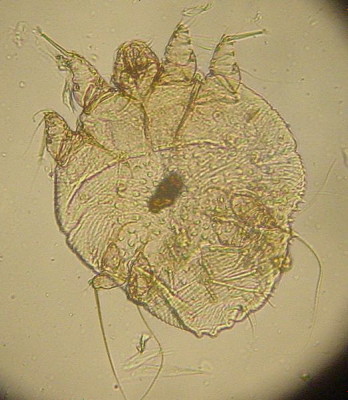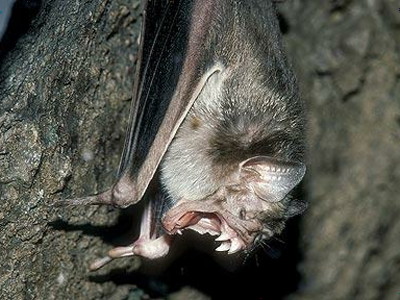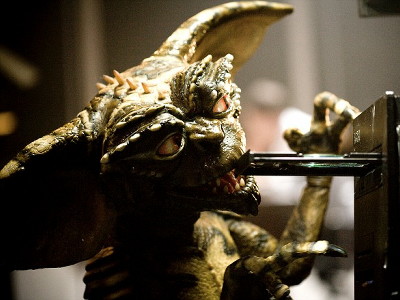The identity of the South American legendary monster "Chupacabra" that sacrifices the livestock of livestock

"Chupacabra"It is said that it attacks livestock and humans and smokes blood, it is often witnessed mainly in Latin AmericaUnidentified animal (UMA)is.
Contrary to the pretty word that seems to come out also in the Star Wars, in Spanish, about the identity of the terrible monster whose name is "suck blood of cabra" (Chupa), a zoologist at the University of MichiganBarry O'ConnorThe professor explains.
Scary chupacabras monster is as much much victim as villain
http://ns.umich.edu/htdocs/releases/story.php?id=8051(WebArchive as of November 14, 2010)
Many sightings such as "like a dog" "like a rodent" "like a reptile" "have a long nose" "have a sharp tusk" "have a grassy greenish gray skin" "give off an odor" There is a story "Chupacabra". In the skin such as goat and sheep which were attacked, a hole like a stinging point was opened and it was said that the whole body of blood was lost.
Professor O'Connor explained, "A real monster is a small creature with eight legs that changes healthy wild animals to Chupacabra, not" a living creature that attacks livestock with a sharp tusk "," he explained.

Creatures that are said to be "Chupacabra" in July 2010 were shot dead in Texas, but their identities are terrible by dissectionscabiesI ran out of my hair.CoyoteIt turned out to be.
Child of Coyote.

Coyote with hair falling out due to scabies.

Cause scabiesSarcoptes scabiei(Hizenemani) also infests human beings, but in the case of humans, the number of ticks infested per person is also as low as 20 to 30 animals, because the body hair is not dark originally, especially serious except for feeling itching It will not be a problem. According to the evolutionary study of Professor O'Connor and others specializing in mites, human beings and Hizendemi have long relationships, and it seems that humans have acquired resistance to mites in the history of evolution.

When humans began to keep livestock, Hizendemi became infested in a variety of hosts. Dogs with long relationships with humans have a long history with mites and defenses against mites, but in the case of other canine wild animals such as coyotes, wolves, foxes, the association with mites is " Short ", so when you are parasitized you have serious symptoms and may lead to death.
"The relationship between the host and the parasite is a new time, severe symptoms often appear, and the mortality rate of the host tends to be relatively high," O'Connor says. In animals such as coyotes with shallow association with mite dick mites, inflammation occurs due to the mites infested subcutaneously, the skin thickens, the supply of blood to the hair follicles (broom) is cut off, and the hair falls off. In an individual whose weakened resistance is due to bacteriaDermatitisIt may cause stench by this. Together, these are the appearances of Chupacabra, "a monster that gives off an unpleasant odor with hair that is ugly and stiff."
So is there anything like animals parasitized by the mite, such as "blood-sucking diseases" like horror movies becoming ferocious and attacking livestock and changing their character to the creatures that suck blood? "I can not say that, but I will explain why the parasitized coyotes will attack livestock such as goats and sheep," O'Connor says. "Because parasitized coyotes are in a state of weak body, it is difficult to hunt wild prey like a healthy coyote so it is easier to catch it than wild animals such as rabbits and deer It will be impossible to attack the livestock that can operate slowly. "
There are also witness information such as "Walking on two biped legs" and "Thorns on the back" to Chupacabra, but witnesses who first saw Chupacabra in Puerto Rico later went to SF Horror movie "Origins of species species species"It has been strongly influenced by Mr. Kimura and acknowledged that he believed that events similar to this movie were occurring. Excluding what seems to represent the figure of creatures coming out in the movie and what is considered to have been influenced by the image of "Chupacabra with backache on back" among a number of "eye-witness testimonies" It is the appearance of animals such as coyotes and other skin diseases that embossed.
"Proof of absence" is difficult, and although the existence of unidentified animal Chupacabra is not completely denied, most of cases reported as Chupacabra seems to be explained as "coyotes of sickness" .
Related Posts:
in Creature, Posted by darkhorse_log







